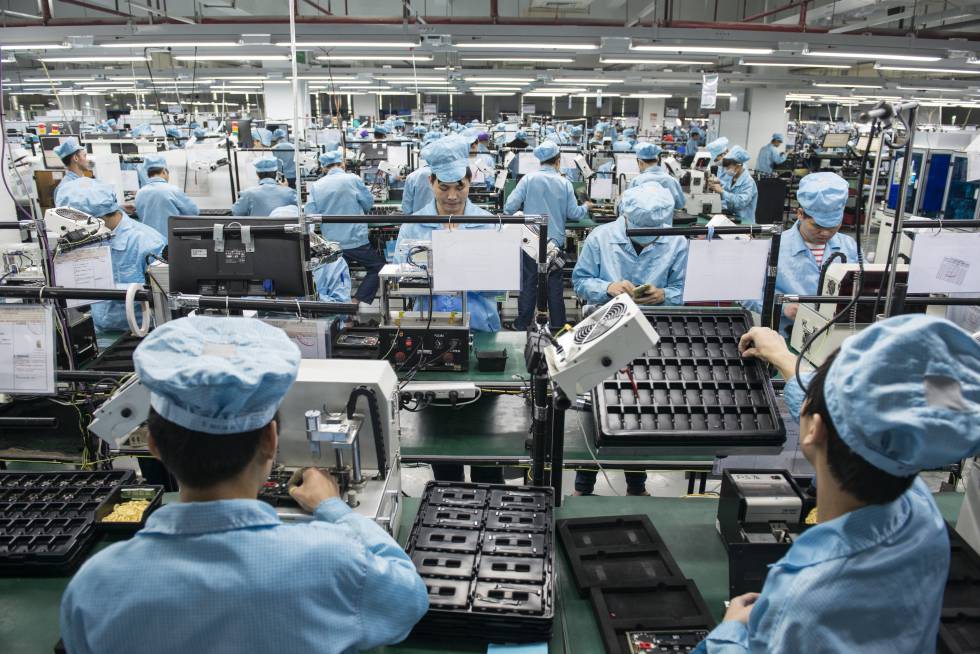
In March 2021, the Ministry of Industry and Information Technology published that China has maintained its position as the world's largest manufacturing center for 11 consecutive years, covering almost 30% of the global manufacturing output. Proof of this is the fact that many of the products we purchase bear the legend "Made in China".
According to Tong Lu (2019), the evolution of the manufacturing sector is deeply linked to the expansion of China's international trade and, in turn, to the structural reforms carried out in recent decades. In the early 1990s, exports from labor-intensive sectors with low labor costs dominated, giving China a large comparative advantage. On the other hand, the Chinese manufacturing sector is increasingly participating in global value chains, thus becoming an important production center and an export platform for multinational companies. Large companies have progressively integrated China into various phases of production, such as design, manufacturing of key components, and innovation and development.
Here are some key elements why China has managed to remain the "factory of the world":
How did China become the factory of the world?
In the late 1970s, China adopted a series of market reforms that laid the groundwork for becoming a manufacturing superpower. Rural land reforms allowed farmers to benefit from their products, thus increasing food production, encouraging more people to seek more lucrative work in the cities. In addition, the Communist Party began to establish special economic zones with market-friendly rules in the southern provinces such as Guangdong to attract foreign investors.
Another key element was the salary of Chinese workers in the 1980s, as the average annual salary in China was between $ 416 dollars and $ 508 dollars, while the average annual salary of an American worker was 40 to 50 times that amount. For this reason, many multinationals decided to relocate their operations to this country. Additionally, China's geographic proximity to the Four Asian Tigers (Hong Kong, Singapore, South Korea, and Taiwan), the economic engines during those years, also helped industries take this step.
Currently, China has many manufacturing centers that focus on the production of parts, components, or finished products. For example, the province of Guangdong has highly specialized areas in the electronics industry and in some other sectors. In the case of the medical sector, we find that a high number of providers are in provinces near the city of Shanghai. The cities of Chongqing and Wuhan are best known for their chemicals and auto parts, respectively.
China produces nearly 50% of the world's major industrial goods, including crude steel (50% of world supply), cement (60% of world production), coal (50% of world production), vehicles (more than 25% of world supply). China is also the world's largest producer of ships, high-speed trains, robots, tunnels, bridges, roads, chemical fibers, machines, tools, computers, cellphones, among others.
Here is a map of the different existing clusters of the footwear, textile, toys, automotive, machinery, decoration, electronics, and diverse raw materials industries in China:
Finally, in May 2015, the Chinese government issued the Made in China 2025 initiative to shift the current growth engine (public investment and exports) to a model focused on consumption and private investment, relying on automation and sustainable production.
In our next article, we will talk about this Development Plan in more depth.
Sources:
ASIADÓNDE. (2020). Made in China 2025: objetivos y obstáculos. Retrieved from: https://asiadonde.com/made-in-china-2025/
Chen, C. (2020). Inkstone Explains: How did China become the factory of the world? Retrieved from: https://www.inkstonenews.com/business/inkstone-explains-how-did-china-become-factory-world/article/3103429
Federico F. & Giorgio P. (2013). Industrial clusters in China: Policy tools for further and more balanced development. Retrieved from: http://revel.unice.fr/eriep/index.html?id=3476
Tong Lu. (2019). El impacto de la manufactura china en el panorama económico internacional. Retrieved from: https://repositorio.upct.es/bitstream/handle/10317/8136/tfg-lu-imp.pdf?sequence=1#:~:text=En%20menos%20de%20tres%20d%C3%A9cadas,bienes%20intermedios%20y%20otros%20productos
Xinhua. (2021). China remains world's top manufacturing hub for 11 consecutive years. Retrieved from: http://www.xinhuanet.com/english/2021-03/01/c_139775605.htm
Yi Wen. (2016). China's Rapid Rise: From Backward Agrarian Society to Industrial Powerhouse in Just 35 Years. Retrieved from: https://www.stlouisfed.org/publications/regional-economist/april-2016/chinas-rapid-rise-from-backward-agrarian-society-to-industrial-powerhouse-in-just-35-years
Greetings from Florida! I’m bored at work so I decided to browse your website on my iphone during lunch break. I really like the information you provide here and can’t wait to take a look when I get home. I’m shocked at how quick your blog loaded on my cell phone .. I’m not even using WIFI, just 3G .. Anyhow, wonderful blog!
Comments are closed.